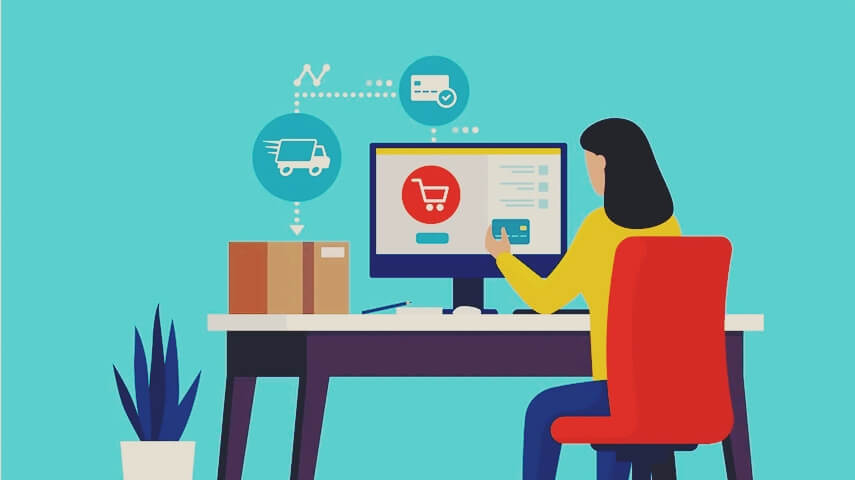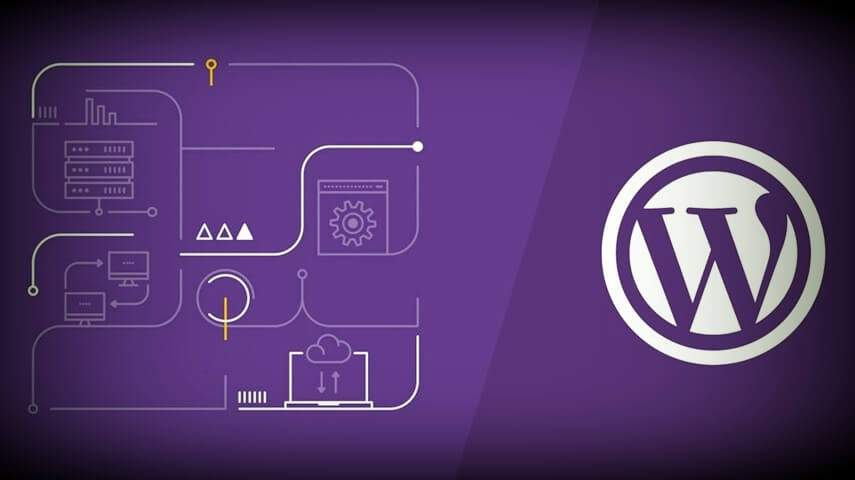E-commerce has become a driving force in the global economy, it has transformed the way we shop, providing consumers with unparalleled convenience and access to a wide range of products and services. However, as much as online shopping has reshaped the retail landscape, the importance of offline, brick-and-mortar stores cannot be understated. The future of retail lies in the seamless integration of both online and offline channels, creating a cross-platform e-commerce ecosystem that caters to the ever-evolving needs of consumers and retailers.
In this article, we will explore the concept of cross-platform e-commerce integration and its significance in today’s retail landscape. We will delve into the benefits of bridging the gap between online and offline retail, the challenges that come with it, and the strategies and technologies that are enabling this fusion.
1. The Importance of Cross-Platform E-commerce Integration
The Changing Retail Landscape
The retail industry has undergone a significant transformation in the last few decades. Traditional brick-and-mortar stores are no longer the sole destination for consumers looking to make a purchase. With the rise of e-commerce, consumers have embraced online shopping for its convenience, vast product selection, and competitive pricing.
The Rise of Omnichannel Retail
Omnichannel retail is a strategy that seeks to provide a seamless shopping experience across multiple channels, both online and offline. It recognizes that consumers often interact with a brand through a variety of touchpoints, such as websites, mobile apps, social media, and physical stores. As a result, retailers have begun to focus on integrating their various sales channels to create a unified shopping experience.
Customer Expectations
Consumers today expect retailers to offer a consistent experience, regardless of the platform they choose. They want the ability to browse products online, make a purchase, and have options for in-store pickup or returns. This blending of the online and offline worlds is where cross-platform e-commerce integration plays a vital role.
2. Benefits of Cross-Platform E-commerce Integration
Enhanced Customer Experience
One of the primary benefits of cross-platform e-commerce integration is an improved customer experience. When online and offline channels are seamlessly connected, customers can enjoy a more convenient and personalized shopping journey. For example, they can research products online, visit a physical store to see and touch the items, and then make the purchase online or in-store.
Increased Sales and Revenue
Cross-platform integration can lead to increased sales and revenue for retailers. By offering multiple channels for customers to shop, businesses can tap into a broader market and capture sales from both online and offline shoppers. The convenience of switching between channels can encourage customers to complete their purchases.
Inventory Management and Fulfillment Efficiency
Efficient inventory management is a critical aspect of cross-platform e-commerce integration. Retailers can ensure that their inventory levels are synchronized across online and offline channels, reducing the risk of overstock or stockouts. Moreover, this integration can lead to improved fulfillment options such as buy online, pick up in-store (BOPIS), same-day delivery, or curbside pickup.
Data-Driven Insights
Collecting data across various channels allows retailers to gain valuable insights into customer behavior and preferences. This data can inform better decision-making, helping retailers optimize their product offerings, marketing strategies, and customer engagement.
Brand Cohesion and Recognition
A consistent brand presence across both online and offline platforms can enhance brand recognition and cohesion. Consumers are more likely to trust and engage with a brand that delivers a unified experience.
3. Challenges in Cross-Platform E-commerce Integration
Technological Complexity
Integrating online and offline systems can be technically challenging. Retailers must have robust infrastructure and software solutions that allow for real-time data synchronization. Legacy systems may need to be updated or replaced to accommodate these changes.
Data Security and Privacy
Handling sensitive customer data across multiple channels can raise concerns about data security and privacy. Retailers must implement strong security measures to protect customer information and comply with data privacy regulations.
Change Management
Adopting a cross-platform integration strategy may require significant changes in organizational structure and processes. Employees may need to be trained to adapt to new technology, and roles and responsibilities may shift to accommodate the evolving retail landscape.
Cost Considerations
Implementing cross-platform e-commerce integration can be costly. Retailers need to invest in technology, infrastructure, and personnel to successfully bridge the online-offline gap. However, the potential return on investment and long-term benefits can outweigh the initial costs.
4. Strategies for Successful Cross-Platform Integration
Unified Data Management
Retailers should invest in comprehensive data management systems that can capture and synchronize data across all channels. This unified approach ensures that inventory, customer information, and transaction data are consistent, regardless of the platform.
Seamless Payment Options
Customers expect a consistent payment experience, whether online or in-store. Retailers can implement solutions like digital wallets, mobile payment apps, and contactless payment methods to facilitate seamless transactions.
Mobile Apps and Loyalty Programs
Mobile apps can serve as a bridge between online and offline shopping. Retailers can leverage apps to offer exclusive discounts, track customer behavior, and provide personalized offers based on in-store and online interactions.
Beacon Technology
Beacon technology uses Bluetooth to send location-based notifications and offers to customers’ smartphones when they are in a physical store. Retailers can use this technology to bridge the online-offline gap, offering tailored promotions or product recommendations based on a customer’s location.
Marketing Automation
Marketing automation tools can help retailers deliver consistent messaging and personalized content across various channels. These tools allow for targeted email marketing, social media campaigns, and in-store promotions that align with the customer’s online behavior.
5. Technologies Enabling Cross-Platform Integration
Internet of Things (IoT)
IoT devices such as RFID tags, sensors, and smart shelves can help retailers track inventory in real time. This technology ensures that products are always available to meet customer demand and supports seamless integration.
Cloud-Based Solutions
Cloud computing enables retailers to store and access data and applications from anywhere. It facilitates data synchronization and collaboration across online and offline channels.
Artificial Intelligence (AI) and Machine Learning
AI and machine learning can analyze customer data to provide personalized product recommendations, optimize inventory management, and predict customer behavior. These technologies play a crucial role in creating a seamless shopping experience.
Augmented Reality (AR) and Virtual Reality (VR)
AR and VR technologies allow customers to experience products virtually, which can be a powerful tool for both online and in-store shopping. Customers can “try on” clothes or visualize furniture in their homes before making a purchase decision.
Blockchain
Blockchain technology can enhance the security and transparency of online transactions, which is vital for cross-platform e-commerce integration. It can be used for secure payment processing, supply chain management, and ensuring the authenticity of products.
6. Real-Life Examples of Cross-Platform Integration
Amazon Go
Amazon Go is a prime example of cross-platform integration. It combines the convenience of online shopping with a physical store experience. Shoppers can enter an Amazon Go store, pick up items, and leave without going through a traditional checkout process. The store’s technology automatically charges customers for the items they take, blurring the lines between online and offline shopping.
Walmart’s Mobile App
Walmart‘s mobile app seamlessly connects online and offline shopping. Customers can shop online, select the in-store pickup option, and have their items ready for them when they arrive at the store. Walmart’s mobile app also offers features like price checking, receipt scanning, and personalized recommendations.
Starbucks Rewards Program
Starbucks has successfully integrated its loyalty program with its mobile app and in-store experience. Customers can earn rewards for both online and offline purchases, order ahead using the app, and enjoy a consistent Starbucks experience across all channels.
7. The Future of Cross-Platform E-commerce Integration
The future of cross-platform e-commerce integration looks promising. As technology continues to advance, retailers will have more tools and solutions at their disposal to create a seamless shopping experience. Emerging technologies like 5G, augmented reality, and artificial intelligence will further enhance the capabilities of cross-platform integration.
Retailers should continue to prioritize the development of omnichannel strategies to meet the evolving demands of consumers. The ability to seamlessly switch between online and offline channels will be a key competitive advantage.
Conclusion
Cross-platform e-commerce integration is the future of retail. In a world where consumers expect a unified shopping experience, retailers must adapt to bridge the gap between online and offline channels. The benefits of cross-platform integration are significant, from enhancing the customer experience to increasing sales and revenue. However, it comes with challenges, including technological complexity, data security, and change management.
Retailers can overcome these challenges by adopting strategies such as unified data management, seamless payment options, and the use of technology like IoT, cloud computing, AI, and AR/VR. Real-life examples like Amazon Go, Walmart, and Starbucks demonstrate the power of cross-platform integration.
As technology continues to evolve, the possibilities for cross-platform integration will only grow. Retailers who embrace this trend and prioritize the seamless connection between online and offline shopping will be well-positioned to thrive in the ever-changing retail landscape. The future of retail is all about providing customers with the best of both worlds, and cross-platform e-commerce integration is the key to making that happen.




